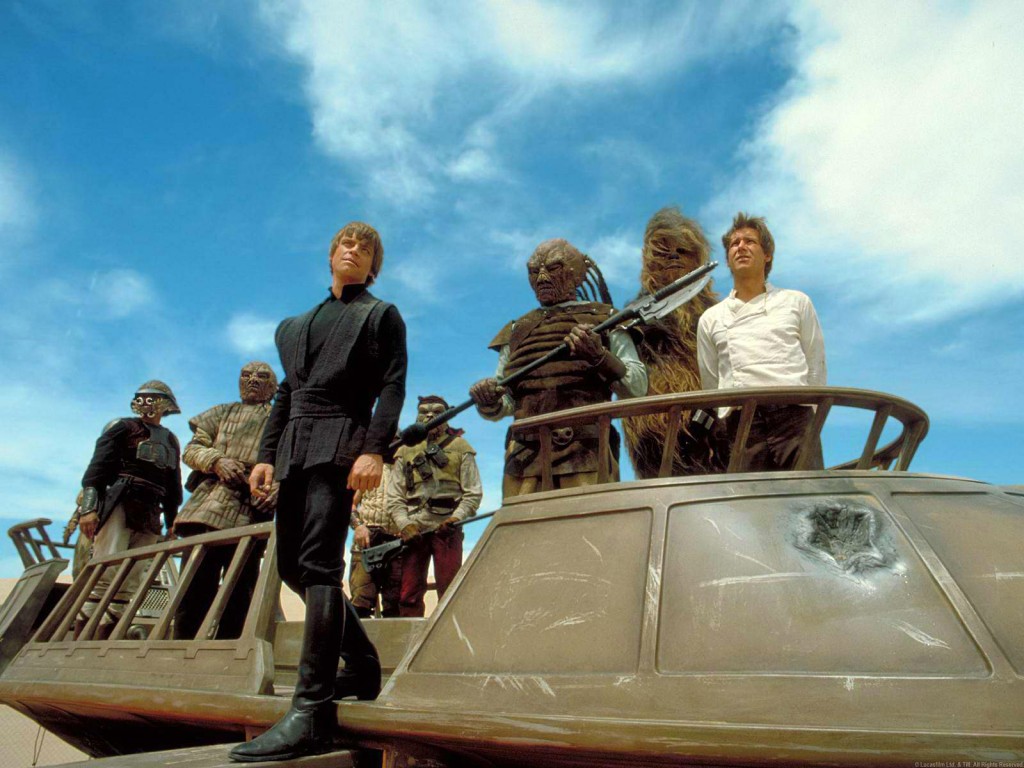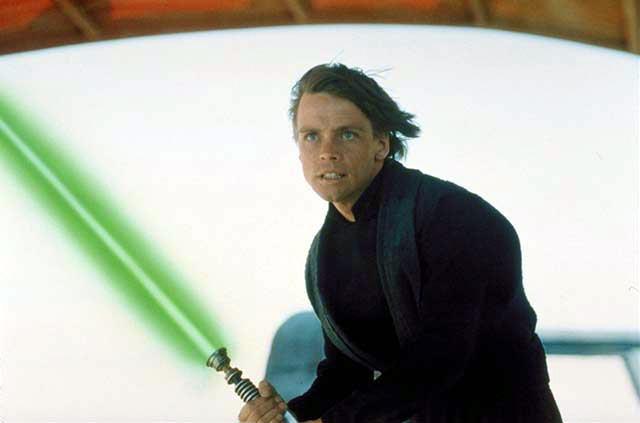Star Wars would not be Star Wars without several key factors: the commitment to classical literary themes in a science fiction setting; the dramatic use of advanced special effects to move the story along; and the evocative musical score, written by legendary film composer John Williams. For me, a Williams fan since the first time I watched E.T. the Extra-Terrestrial who quickly noticed musical similarities in all my favorite films, the music of Star Wars at times lives far beyond the movies themselves. I have great memories of growing up with Star Wars, but after Revenge of the Sith bowed into theaters in 2005, the movies themselves did not remain active touchstones quite like their soundtracks.
Williams’s gift for unifying the original Star Wars trilogy with instantly recognizable, frequently hummable themes proves he’s one of the greatest musicians of his time. What’s most interesting, however, is the delicate way he retains those themes (or leitmotifs) in the films. The dark tone of The Empire Strikes Back, for instance, comes in large part from Williams relying less on the hopeful, almost romantic themes of the first film and more on the terrifying “Imperial March” at almost every transition. That isn’t to say that the pre-existing themes of our heroes aren’t there, but the balancing act committed onscreen, which makes Empire feel at once a sequel to and a separate experience from Star Wars, is extraordinary.
Rarely is Williams’s balancing of leitmotifs more impressive than in one crucial scene early in Return of the Jedi. Luke Skywalker, Han Solo, Princess Leia, and friends are taken to Tatooine’s Dune Sea by the gangster Jabba The Hutt to be devoured by the hungry Sarlacc. What Jabba doesn’t expect, of course, is a confident Jedi Knight, more agile here than in his duel with Darth Vader from Empire. We watch our heroes escape Jabba’s clutches in a brilliant, explosive action sequence.
While Williams penned a whole new host of themes for Jedi, in this sequence he chose to utilize a dazzling reprise of themes and musical ideas, many borrowed from the original Star Wars, to showcase both the cyclical nature of the Star Wars score as well as the malleability of Williams’s brilliant musical ideas to multiple scenes and concepts throughout the series. And, as we’ll discuss further, its thematic reprisal is made even more exciting by the fact that it was originally scored in a much different fashion.
The original five-minute cue, titled “The Return of the Jedi” on the original soundtrack album and subsequently titled “Sail Barge Assault” on expanded reissues (further extended with a minute of music over which C-3PO translates Jabba’s sarcastic farewell message) begins with foreboding low horn stabs over anticipating strings as Luke is led to the plank of a sand skiff to leap into the Sarlacc pit. An uncertain shift occurs in the orchestra as R2-D2, from the sail barge, opens a panel ready to shoot Luke’s lightsaber into his grip.
Then, as Luke leaps off the plank and flips his way back onto the deck of the skiff, Williams leads the orchestra in a triumphant rendition of Luke’s theme (the main title theme of the films). This rendition, similar in tone to Luke and Leia’s shootout with stormtroopers in the Death Star during Star Wars, resolves into a familiar theme: the brassy Rebel fanfare, the familiar thirds of which were fixtures of Star Wars but considerably rarer in The Empire Strikes Back. Its presence here signifies Rebel victory imminent.
At about 1:50, as laser blasts nearly knock Lando Calrissian off a skiff and the bounty hunter Boba Fett activates his jet pack to do battle with Luke, we hear a familiar rendition of the Rebel fanfare, near identical to the brisk reading in Star Wars when the Millennium Falcon successfully escapes the Death Star. The musical action shifts back to Luke’s theme as Skywalker jumps to another skiff to battle Jabba’s guards (and Han Solo delivers one of the film’s better visual gags, blindly slamming a staff into Fett’s rocket pack and sending him tumbling ignominiously into the Sarlacc’s maw).
At 2:48, the action switches to Jabba’s sail barge, where a wild take on Jabba’s tuba-based theme indicates the Hutt’s scheme is not going to plan. At 3:05, we receive a brief but inspiring reprise of another Star Wars cue: “Here They Come,” in which Han and Luke take to the Falcon’s sentry guns to ward off TIE fighters. (Astoundingly, nearly all of this music was edited out of the final cut of the film!) After a brief transition when Leia successfully garrotes Jabba to death, we’ve got another musical quote: the driving figure that occurs from 3:30 to 3:43 is identical to a passage in the final battle of Star Wars, where Luke rescues Biggs from an approaching fighter. Fittingly, the action in Return of the Jedi is almost parallel, as Han attempts to rescue Lando from falling into the Sarlacc’s jaws.
After some rousing variations on Luke’s theme and the Rebel fanfare, including a brilliant three-step bit at 4:27, we engage in tense, non-thematic music as Han continues to try to rescue his friend. When he finally squeezes off a blaster shot at one of the Sarlacc’s tentacles and saves Calrissian, a new heroic fanfare for horns sweeps through the orchestra at 5:02, present when Luke rescues Leia off the sail barge, the droids are reacquired safely and our skiff of heroes escapes The Dune Sea as Jabba’s sail barge explodes. But at 5:39, one last familiar leitmotif makes a shocking reappearance: a major-key variation on the four-note Imperial motif exclusive to the first film, which resolves into an uplifting reprise of the new “hero” fanfare as Luke’s X-wing and the Falcon fly off of Tatooine (originally featuring a transitional scene in a sandstorm that would remain on the cutting room floor).
It’s amazing, uplifting stuff, the type of thing that was de rigeur for Williams even then. But, astonishingly, it was Williams’s second pass at scoring this sequence: an alternate cue, first released in a Star Wars box set in 1993, relies almost entirely on non-thematic action music. To be honest, it doesn’t seem to possess the confidence of the final version, although it features some interesting traits: a motoric figure 35 seconds in that resembles a brief passage from chase music in E.T.; virtually the same Jabba theme reprise at 1:48; at 3:13, a musical idea that would later find its way into a concert arrangement of “The Forest Battle” included on the Jedi soundtrack album (in fact, this whole alternate cue would better fit into the Battle of Endor sequence); and from 3:50 on, the cue basically takes the shape it would take in Williams’s final version, minus a few flourishes.
Ultimately, the alternate “Sail Barge Assault” doesn’t offer the same kind of confidence the accepted film version does, its repetition of themes allowing the viewer to anticipate and enjoy an easy victory before hurtling toward more uncertain destinies on the forest moon of Endor. But this mix of familiarity and unexpected excitement is why we keep coming back to the music of John Williams time after time—and at least one of the reasons crowds for this week’s release of The Force Awakens are going to be more excited than you can possibly imagine.


